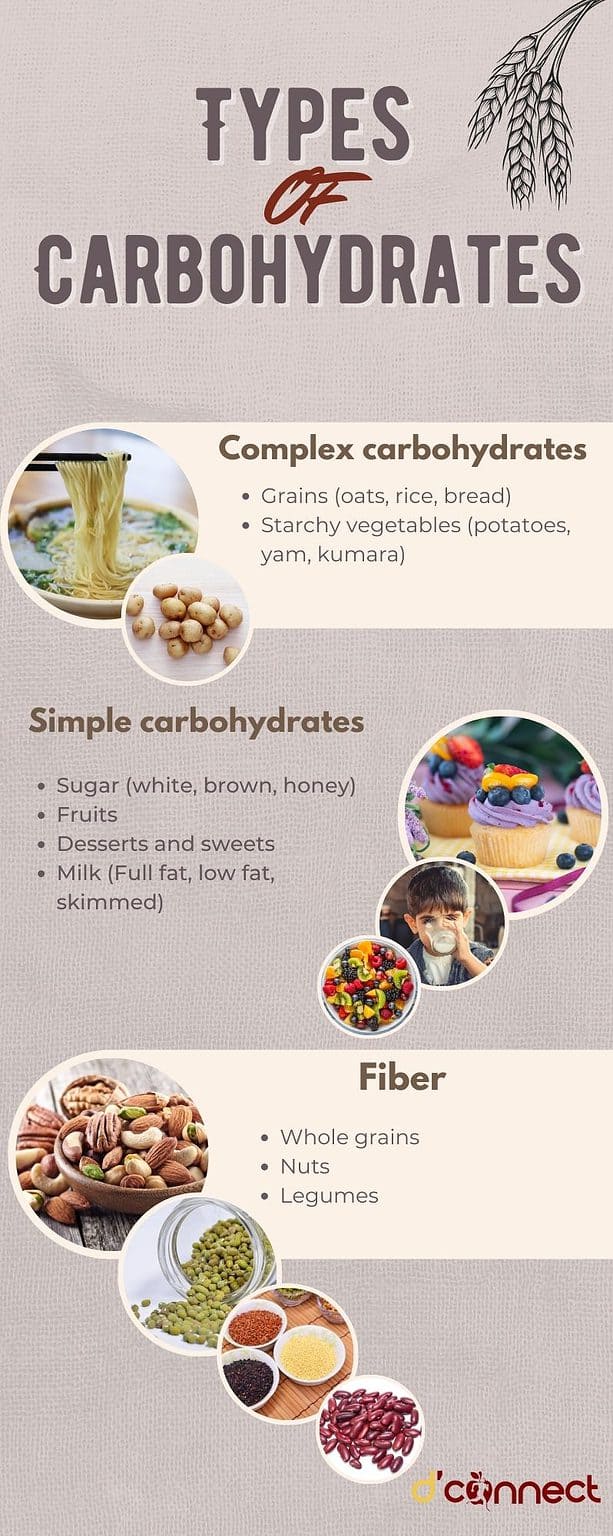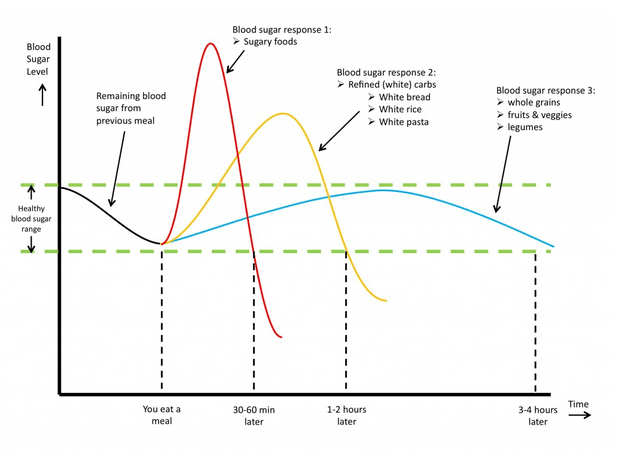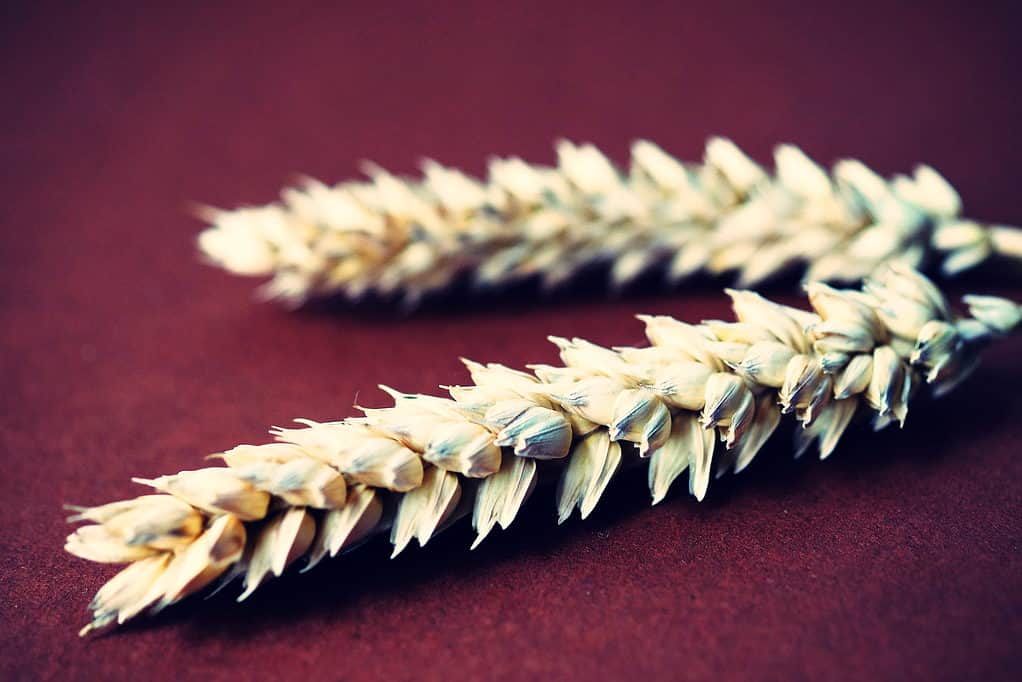
Stephanie Glass
(BFoodTech, DipBusL7, CHLC, MBP)
For several decades, dietary fats were presented as bad, and we were told that we should cut them out or limit their consumption as much as possible. Now, it seems that carbohydrates are taking that spot as the next “bad” thing in our diet.
In this article we will look into the sources of carbohydrates that are most commonly found in plant-based products. Sugar, however, will be discussed in a separate article.
Simple definition of carbohydrates
Carbohydrates are molecules that are made of different types of sugars linked together.
There are different ways to group carbohydrates, such as
- complex and simple carbohydrates
- soluble and insoluble carbohydrates
- digestible and indigestible carbohydrates
- glycemic index
- slow or fast release carbohydrates

Carbohydrates are a macronutrient that the body breaks down into the sugar units and is used as or converted to glucose, which is what our bodies use to produce energy.
Naturally occuring starch
Plant-based products will be a source of carbohydrates because plants are the main source of carbohydrates in our diet.
Starch is made of units of glucose that is broken down by specific enzymes (amylases) in our digestive system.
The glucose units are absorbed into our bloodstream and distributed to our muscles, brain, liver and other organs to be converted into energy or stored as glycogen (many units glucose/sugar) or fat as an energy reserve.
RELATED — Diet and the Brain: Our brain on sugar
Our everyday sources of starch are:
- grains and cereals (rice, wheat, oats, rye, buckwheat)
- starchy vegetables (sweet potatoes, potatoes, beetroot, pumpkin)
- legumes (beans, chickpeas, lentils)
Because starch is a large molecule and can be found in more or less complex structures, the breakdown into glucose is slower.
The more complex form of starch, the slower the digestion

Compared to table sugar that is made of only 2 units of glucose, starch is made of hundreds of units of glucose, and prevents sudden spikes in blood sugar, which can help us to protect ourselves from diabetes.
RELATED — Diabetes: Early Signs, Causes, Types and Treatment
Plant-based products will be a natural source of starch because of the nature of the ingredients used. Legumes, grains and some vegetables have starch in them, therefore so will their derived products.
There are, however, products that are processed in a way to remove starch, like using wheat gluten or other protein isolates from pea or soy.
Added starch
Many processed plant-based foods have additional sources of starch. Starch is widely used for texture as it retains moisture and as a bulking agent.[1]
These sources of starch are obtained from plants but they are separated from the whole plant matrix. This means that added starches are more readily digestible than the whole grain/vegetable/legume.
Added starches increase the total carbohydrate count
Great examples of added starches are:
- maize starch
- potato starch
- tapioca starch
- white wheat
- rice flour

SUMMARY - starch is a naturally occurring complex carbohydrate found in plant products. Due to its structure, it has a lower glycemic index than sugar (it is slower releasing).
Dietary fibre
Dietary fibre are complex carbohydrates that are not digested. This means that they are not considered in the caloric value of food.
However, they are very important for healthy digestion. Dietary fibre, also known as prebiotics, are essentially the food for our gut’s microbiome.[2]
Our intestinal lining is colonized by trillions of bacteria of different species and each of them have a key role in our health by
- metabolizing food
- regulating the immune system
- protecting us from pathogenic bacteria and viruses
- assisting our mental health, emotions, and stress levels
In order to have a healthy mind and body, the microbiome has to be thriving with the right bacteria and it must be fed the right food.
Dietary fibre can be split to soluble and insoluble fibre.[3]
Soluble fibre forms a gel when mixed with water, both in our stomach as in processed foods where soluble fibre is added as a gelling agent.
Because of this, it helps to reduce the absorption of cholesterol and saturated fats, which has a positive effect on reduction in the risk of
- stroke
- cardiovascular diseases
- type 2 diabetes[4]
Soluble fibre reduces blood sugar levels
Sources of soluble fibre include fruit, vegetables, legumes and oats.
Other fibre ingredients that might be added to processed foods include inulin (or chicory root), psyllium husks, oligosaccharides and wheat dextrin.
Insoluble fibre does not dissolve in water but it does retain it. Therefore, it helps to create bulk in the intestine and softens the stool.

It also induces the secretion of mucus in the intestinal lining, which aids motility. Insoluble fibre ingredients include cereal bran (wheat bran is the most popular), cellulose, methylcellulose, resistant or modified starch, and lignin.
Dietary fibre is also used for product development purposes.
Adding fibres as ingredients on their own to processed products is also a solution to developing plant-based products with a lower load of digestible carbohydrates.
SUMMARY - dietary fibre plays a key function in overall health. Plants are the only sources of fibre and the wider the variety of sources consumed, the better it is for our gut microbiome.
What are the preferred sources of carbohydrates?
The less processed the ingredient the better. We should always select whole ingredients (e.g brown rice vs rice flour, or corn kernels vs maize starch).
In the process of removing starch from the whole source, the starch is broken down, which makes the glycemic index increase while we are losing valuable nutrients such as
- vitamins
- fibre
- fats
- protein
- minerals
When selecting a plant based product, look at the ingredient list and identify those that have the ingredients listed as their whole name.
Related Questions
1. What increases the glycemic index of foods?
Any processing that removes fiber or other more complex macronutrients will also increase the glycemic index.
Food processing that will increase glycemic index are
- canning
- steaming
- cooking
- fermenting
- malting
- extruding
and other heat treatments that break down starch or concentrate sugars by removing water.
2. Does plant-based means that the product is vegan?
No. Plant-based products still might use animal derived ingredients like
- Gelatines
- Filters
Plant-based products have an allowance to cross contamination, meaning the manufacturing facility might also process animal products.
All vegan products are plant-based but not all plant-based are vegan.
3. Are there plant-based products that are low in carbohydrates?
Yes. Mycoprotein is low in carbohydrates and so are products that are made from protein isolates or ingredients like nuts and seeds instead of grains, legumes or starchy vegetables.
Reading the ingredient list and nutritional panel will give you an indication of the type of carbohydrates and the quantity present.
Have you started reading the nutritional labels on the products you buy often, and are you wondering what certain numbers and letters mean? Let us know in the comments, and we’ll look to talk more about it in our next article.
Stephanie is a qualified Food Technologist, Certified Holistic Life & Nutrition Coach and Mind-Body Practitioner based in New Zealand. She has experience in R&D, Food Safety and Quality Assurance.
References
(1) BeMiller, J. N., & Whistler, R. L. (2009). Starch: Chemistry and Technology (Food Science and Technology) (3rd ed.).
(2) Holscher, H. D. (2017). Dietary fiber and prebiotics and the gastrointestinal microbiota. Gut Microbes, 8(2), 172–184. https://doi.org/10.1080/19490976.2017.1290756
(3) Dhingra, D., Michael, M., Rajput, H., & Patil, R. T. (2011). Dietary fibre in foods: a review. Journal of Food Science and Technology, 49(3), 255–266. https://doi.org/10.1007/s13197-011-0365-5
(4) Yusuf, K., Saha, S., & Umar, S. (2022). Health Benefits of Dietary Fiber for the Management of Inflammatory Bowel Disease. Biomedicines, 10(6), 1242. https://doi.org/10.3390/biomedicines10061242






